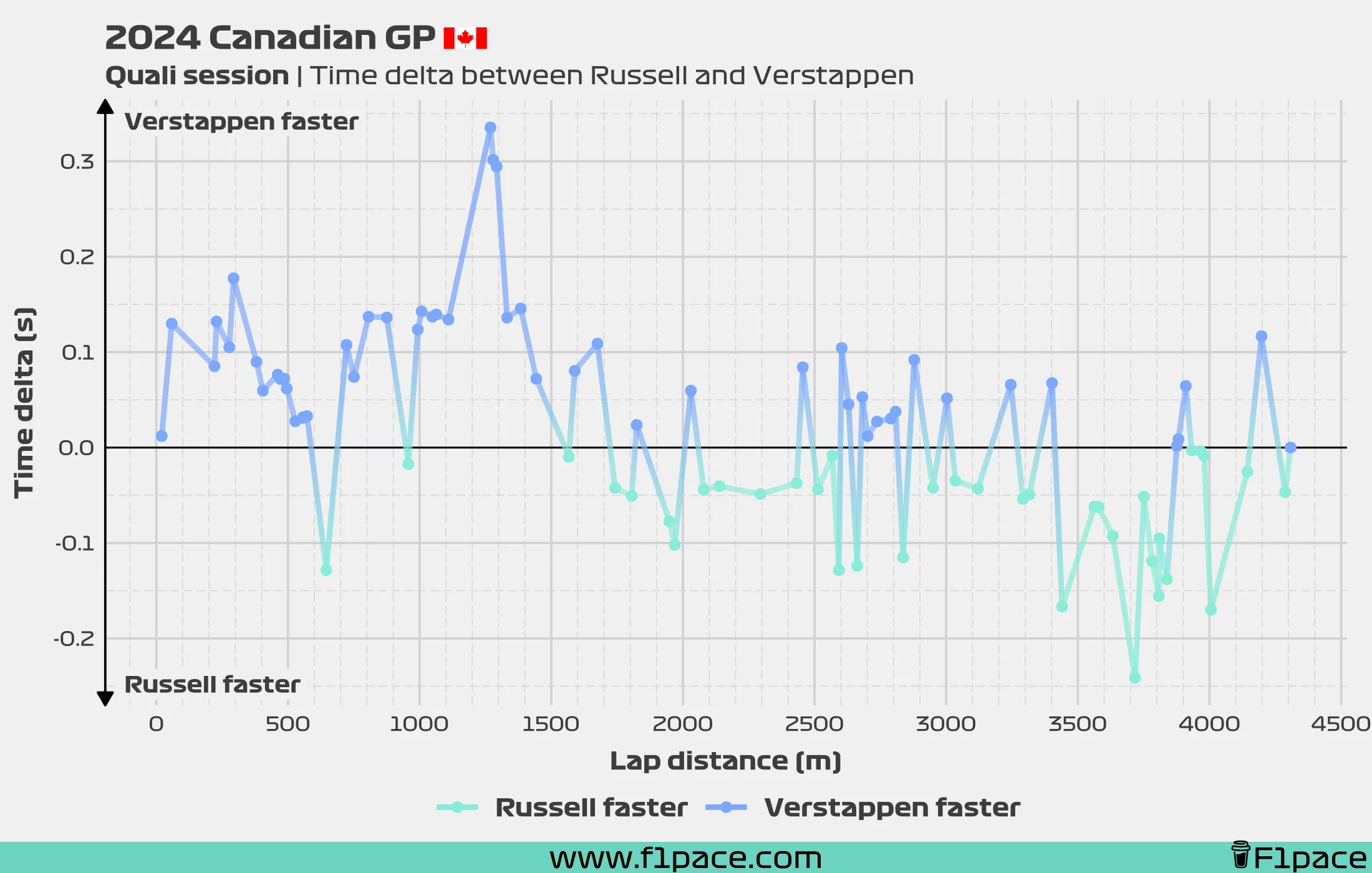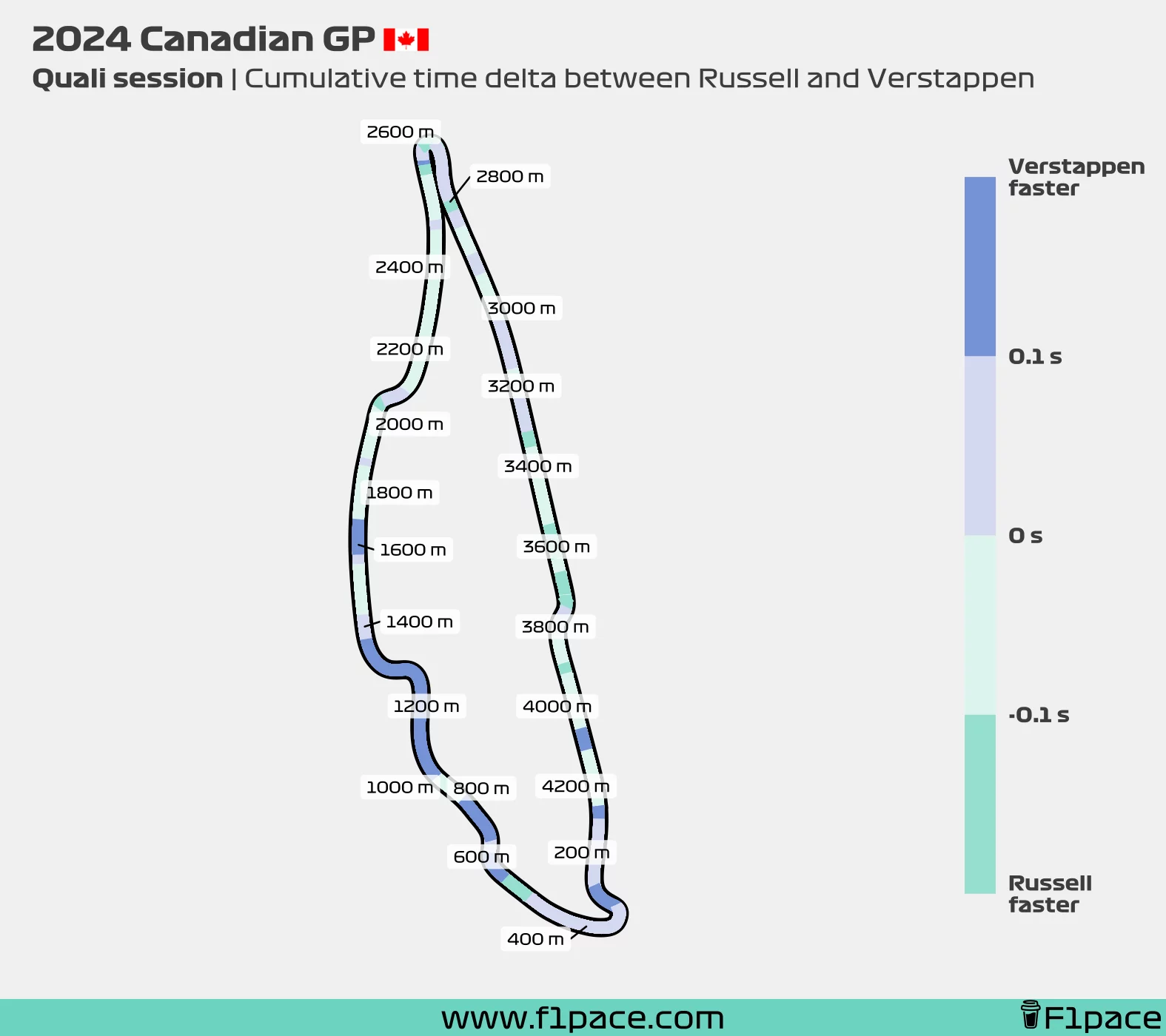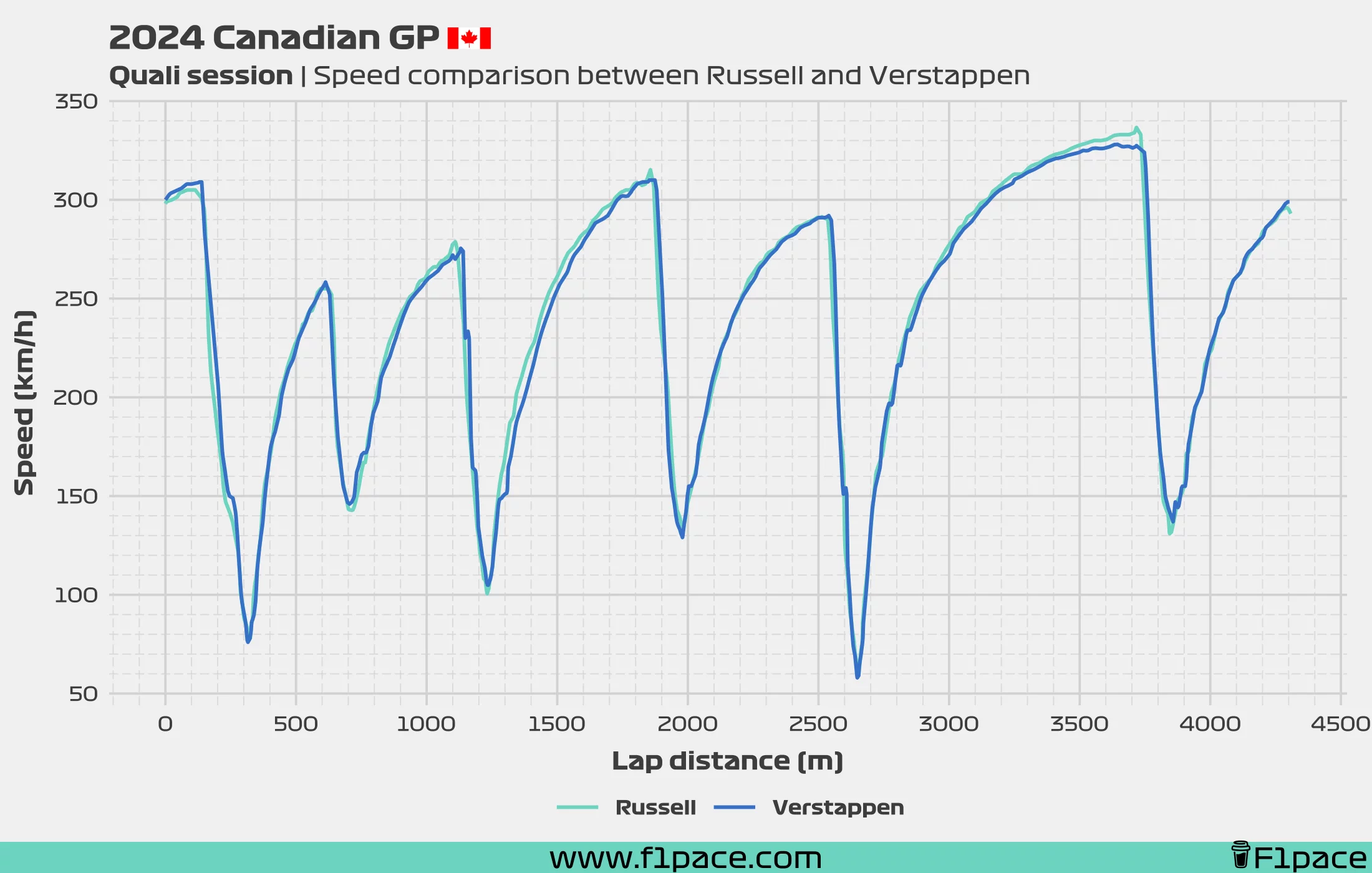Maybe you don’t remember, but when I was using my previous site (F1bythenumbers) I worked using the telemetry data. For a very long time I stopped working with that type of data mostly because, well, it has many quirks. Believe it or not, all of the analyses out there are using data that 1) isn’t properly synced and b) has many inaccurate interpolated values. In some cases, the distances calculated are wrong by as much as 100 meters or even more. In my opinion, this is completely unacceptable. The simple truth is that the raw data obtained by most sources out there is just not up to the task of analyzing runs that require millisecond precision.
It wasn’t until a few weeks ago that I decided to give telemetry data a chance. I worked hard for dozens of hours to properly process the raw data and obtain a dataset that was accurate enough for my high standards. As far as I’m aware, this is the first and only analysis out there that uses corrected data.
I will be using this newly corrected data to give you more detailed analyses that you can trust, so hopefully, you’ll enjoy them.
Introduction
This analysis is only possible after doing extensive post-processing of the raw telemetry data. The data points are properly synced and interpolation has been kept to a minimum. When interpolation was necessary it was done in a way that reduced the margin of error to the maximum by using complex statistical models that provide increased precision over simple interpolating techniques. I’m willing to put my head on the line here and assure you that this data is reliable and should provide proper, real, conclusions from what we saw in the qualifying session
For this analysis, I will be working with data from the qualifying session of the 2024 Canadian GP. In this analysis, I will compare the fastest lap done by George Russell (1:12.000) vs the fastest lap done by Max Verstappen (1:12.000).
My data won’t exactly match the data shown by other sources. I’ve extensively post-processed the raw data to get a dataset that is up to the task. Having said that, when two drivers have the exact same time up to the millisecond, there may be little issues here and there.
Time delta


The two charts shown in this section work in tandem. The time delta chart shows the time gap between both drivers at different points of the lap, while the map shows the same cumulative delta over the course of the lap. The time delta chart has higher precision than the map, but the map shows a good overview of how the lap developed for both drivers.
Do not confuse this map with the track dominance graphic provided by AWS. My chart shows the cumulative time delta throughout a lap, while their graphic shows who was faster on predetermined sections of the track.
Max had a strong start to the lap, achieving a delta of over 0.3 seconds ahead of Russell. He was particularly impressive between turns 5 and 6 (1000 to 1300 meters), where he managed to pull ahead of George. However, Russell had a much stronger performance in turn 7, which brought the delta back in his favor. Without video footage, it’s difficult to pinpoint exactly what happened, but Max lost a significant advantage in this section of the track.
The rest of the lap was quite even until the end of the Casino Straight, just before turn 12. The data shows that the Mercedes driver had a higher top speed, allowing him to turn a slight deficit (less than 0.1 seconds) into a strong lead of around 0.2 seconds. Verstappen, however, carried more speed through turn 12, giving him a fighting chance for pole position. In the end, it was a close battle, with both drivers finishing their laps at the same time.
Both of these charts use only positional data, with minimal interpolation required to perfectly match the position of both drivers. The precision of this analysis should be well under 1 hundredth of a second.
Speed telemetry

This chart interpolates some speed data, but the interpolation was done with statistical models that produce far more realistic data points than simpler algorithms. Although the telemetry’s low refresh rate causes some “blockiness”, the data should be smoother and more accurate than that provided by other sources.
The telemetry data reveals some significant differences between the two drivers. George and his F1 W15 were much faster than Max by the end of the Casino Straight. Although both drivers had similar acceleration, the Mercedes car had a higher top speed, suggesting that it was running with slightly less downforce than the Red Bull.
Max, on the other hand, was stronger in multiple corners. At the 700, 1200, and 3850 meter marks, Verstappen managed to carry more speed through the apex, allowing him to gain valuable time. However, he lost a significant amount of time between the 1200 and 1900 meter marks. It seems that Max had a poor turn 7, which cost him time from the exit of turn 7 up to the start of turn 8. While our data isn’t perfect, reviewing the onboard camera footage would help determine if Max had a moment or what exactly happened there. He lost approximately 0.3 seconds in that section of the track alone.
Final remarks
There was nothing to separate Max Verstappen and George Russell during the 2024 F1 Canadian GP qualifying session. Max looked slightly stronger in a few corners, but Russell made up ground on the straights, particularly between turns 7 and 8, as well as on the Casino Straight. It’s rare to see lap times so close, but this highlights just how skilled F1 drivers are and how even one-thousandth of a second can make a difference in a tight session like this.
Support me!
Hopefully, you have enjoyed this detailed analysis. I want to write more and create more personalized analyses, so I’m excited about the possibilities now that I have proper telemetry data. As I mentioned, my data won’t match the one provided by other sources. This data has been reworked to be more precise, allowing me to delve into the world of telemetry analysis. This process took at least 30 hours of hard work, at least based on rough estimates, but I think the result was worth it.
If you enjoyed this article, please support me and my project. Keeping this site going takes many hours of energy and effort. Trust me, maintaining a project like this one is no easy task. If you want to donate some money to the cause, please click on the BUY ME A COFFEE button. If you don’t have money to donate, please share the content with other people so that this project can keep growing. Thank you.
